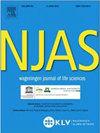Perceived climate risks and adaptation drivers in diverse coffee landscapes of Uganda
Abstract
Whereas adaptation to climate variability takes center stage in the agricultural development discourse, implementation is poorly guided through adoption of ‘one-size-fits-all’ adaptation approaches in coffee landscapes. This study empirically provides evidence of diversity of rural coffee farm-households and climate vulnerabilities in Uganda. We specifically characterized farm-household systems in the coffee-based farming systems; identified perceived climate risks; identified generalized landscape-level and specific farm-household system-level adaptation practices; and determined socio-economic drivers that impacted uptake of adaptation practices. 688 farm-households were surveyed and asked what they perceived as major climate risks, and how they adapted to experienced shocks/stresses in Eastern (Arabica) and Central (Robusta) Uganda. Principal Component and Multivariate Cluster Analyses were adopted for farm-household systems identification, and Semi-Nonparametric model for uptake of adaptation practices. Distinct farm-household systems were identified in Central (coffee-maize-beans; coffee-livestock-off-farm) and Eastern Uganda (coffee-banana-maize; coffee-banana; coffee-off-farm). They differed by land allocations to crops, livestock rearing, rainfall/altitude gradients, off-farm activities and crop income. Farm-households experienced food shortages and crop losses resulting from prolonged drought and erratic shifts in rainfall distribution. The major generalized adaptation practice was inorganic fertilizer use while the specific included herbicide use and increase in livestock numbers in Central Uganda; and pesticides use, structural technologies and off-farm activities in Eastern. Adaptation drivers include household-head’s awareness of climate variability and involvement in policy-formulation process (both regions); farm-household’s total land area (Eastern Uganda); and access to input/output markets (Central Uganda). We conclude that policy makers should package adaptation practices per farm-household system to enhance effective adaptation to climate risks.

 求助内容:
求助内容: 应助结果提醒方式:
应助结果提醒方式:


